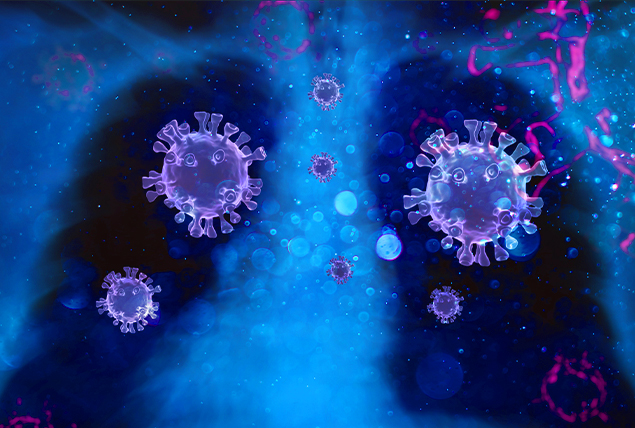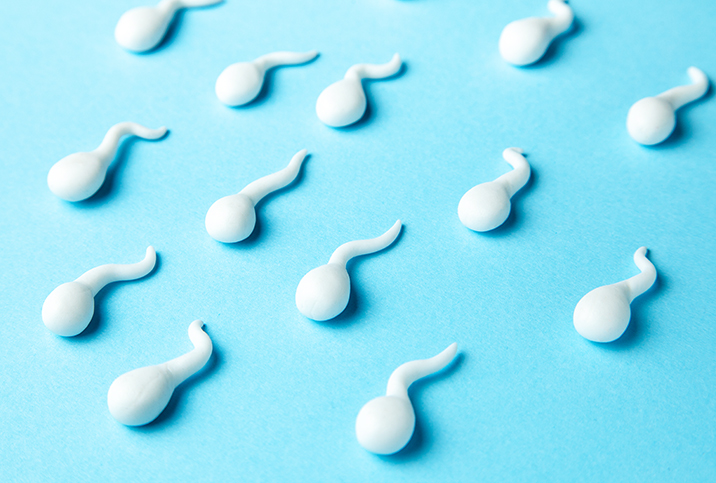It's 2024 and We're Still Living With COVID-19

Key Points
- At the close of 2023, almost 800 million cases of COVID-19 had been diagnosed around the world, with more than seven million deaths recorded.
- There were more than 200 reported symptoms of long COVID and its impact on multiple organ systems.
- New 2024-2025 vaccines are prepared for a September launch.
Even more surprising than President Biden stepping down from his reelection bid was the news in the week before that he had come down with COVID-19. Aren't we done with the pandemic?
Yes and no. Although an end to the public health emergency was declared in the Spring of 2023, the World Health Organization still refers to COVID-19 as a pandemic. By the close of 2023, almost 800 million cases of COVID-19 had been diagnosed around the world, and more than seven million deaths were recorded.
That's 100,000 times as many cases and 10,000 times as many deaths as the 2003-2004 SARS pandemic.
Why does Covid-19 still matter?
Effective May 1, 2024, hospitals are no longer required to report COVID-19-related data to the National Healthcare Safety Network, according to the Centers for Disease Control and Prevention (CDC).
This makes it harder to assess and pay attention to the disease which, as President Biden will attest to, still has the ability to stop us in our tracks.
The CDC is advocating for hospitals to keep reporting data on a voluntary basis.
As recently as May 2024, the CDC released a statement, "As of July 16, 2024, we estimate that COVID-19 infections are growing or likely growing in 42 states and territories, and are stable or uncertain in 6 states and territories."
How is COVID-19 treated?
Let's start with a refresher on the disease. COVID-19 is transmitted by contact with respiratory fluids that carry the SARS-CoV-2 virus. You can be infected by someone who has the virus by coughing, sneezing or even speaking.
Infected particles can move throughout a room and remain airborne for hours.
"Physical therapy can be implemented for those hospitalized or bed-bound for an extended period of time with COVID-19," said Dung D. Trinh, M.D., based in Orange County, California. "Getting adequate rest, stress reduction and sunlight exposure will also help promote healing."
Regaining your stamina without overtaxing yourself. Muscular atrophy can make the road to recovery harder.
"The effects of COVID-19 are simply one more type of post-viral chronic fatigue syndrome (CFS)," said Jacob Teitelbaum, M.D., a board-certified internist based in Kona, Hawaii. "What's unique is that there may be specific injury to organs such as the lungs, heart or brain, which may also need to be addressed."
Teitelbaum evokes other chronic fatigue syndromes, like fibromyalgia, which require holistic treatment measures and chalks a full recovery to lifestyle adjustments.
"Nutrition is an important part of healing and that means decreasing sugar intake—such as sodas and fruit juices—increasing salt intake, and eating a high-protein diet," he added. "A good multivitamin high in B vitamins and magnesium is also important."
What is long COVID?
From the most quantifiable approach, long COVID—or long-haul COVID— seems to affect around ten percent of cases worldwide, or 65 million people, indicated a 2023 report.
"'Long-haul' is defined as the persistence of any symptoms lasting more than three months after a COVID-19 infection, associated with fatigue, brain fog and sometimes widespread pain," Teitelbaum said.
"Long COVID can occur even among those with mild symptoms," Trinh said. "However, those more likely to get long COVID include patients with severe symptoms, those hospitalized for COVID-19, those who needed ICU care and those with underlying health conditions."
Over 200 reported symptoms of long COVID and the condition itself impacts multiple organ systems.
"The big challenge we face is that long-haul COVID isn't a single condition but rather presents as one of several subtypes," said Brian Labus, Ph.D, MPH, assistant professor of epidemiology at the University of Nevada in Las Vegas.
"We have been able to describe a few main types of long-haul COVID, including a type that has mostly cardiac and renal symptoms, respiratory symptoms, nervous system and musculoskeletal symptoms, and a less common one with gastrointestinal symptoms."
"But not everyone easily falls into one of these categories. We are still trying to understand the mechanisms that lead to the different diseases, and until we do, treatment is a challenge," Labus finished
Complications and related conditions
"The elderly and the very young are always at risk, but conditions placing people at higher risk regardless of age are those that suppress the immune system or affect the heart or lungs, like heart disease, chronic lung, liver or kidney disease, diabetes, obesity or having a weakened immune system from things like cancer treatment, medications or HIV infection," Labus said.
Soumi Eachempati, MD, FACS, CEO and chief medical officer of CLEARED4, based in Miami, Florida, reverse-engineered this insight by starting with what symptoms are most likely to arise.
"As opposed to looking for the name of an illness, keep your eyes out for any pre-existing symptoms you already struggle with or have a family tendency towards," he said.
"Problems from blood clots, which include stroke or limb loss, can also occur. The most common complications include persistent shortness of breath, chronic fatigue and neurologic problems such as brain fog," Eachempati said.
COVID-19 and sexual health
Trinh doesn't mince words concerning the pandemic's impact on sex.
"How does long-haul COVID-19 impact sexual health?" Trinh said. "They are simply too tired to do it."
Labus drew a correlation between COVID-19 and sexual dysfunction.
"Researchers have indicated that COVID-19 infection increases the risk of erectile dysfunction (ED) in men, especially in the case of more serious cases," he said. "With long-haul COVID-19, people may have shortness of breath, extreme fatigue or other serious physical health issues that may significantly harm their sexual health."
Reproductive health can also be affected by long COVID.
"The virus frequently triggers hypothyroidism—when your thyroid gland doesn't produce as many hormones as you need—which makes it harder to get pregnant and increases miscarriage risk," Teitelbaum said.
"This is reversible. Post-viral chronic fatigue syndrome usually will not cause problems with infertility unless it is triggering insulin resistance and PCOS [polycystic ovarian syndrome]. But the latter can be easily addressed with the medication metformin," Teitelbaum said.
Dating with COVID-19
In March 2024, the CDC changed its guidance on what to do if you're infected with COVID-19.
The latest recommendation for those with mild COVID-19 is to stay home and remain isolated until you're been fever-free for 24 hours without medication. The CDC also suggests wearing a mask for an additional five days once you're back in the world.
"Some people who have opportunistic infections with candida overgrowth—common with post-viral CFS and fibromyalgia—find that they will not tolerate alcohol," Teitelbaum said. "But the alcohol does not worsen their condition significantly."
While a difference of opinion can inspire engaging relationships, there's been much controversy surrounding the pandemic.
"One of the misconceptions that has been propagated is that the COVID-19 vaccination itself is promoting new variants," Trinh said. "New variants are created by the high number of infections in the community."
Faux science or even emotionally motivated opinions around the pandemic and its vaccine can transform an attractive partner into a hard no.
"I think we've moved past most of the misconceptions about the disease itself but a lot of the misconceptions about the vaccine still remain," Labus said.
"Unfortunately, many of these misconceptions have been around as long as we have had vaccines. The COVID-19 vaccine is safe and effective, but no amount of scientific research is going to get some people to see it that way."
The future of COVID-19
New 2024-2025 vaccines are being prepared for launch in August and September. The hope is that a high percentage of Americans will decide to upgrade to this new vaccine and be better protected for the fall and winter months.
"We have seen a spike during the winter season and this pattern has been consistent since 2020," Trinh said. "Over time, COVID-19 flare-ups will mimic coronavirus infections in general with spikes during the winter season."
There are also long-term concerns linked to the changing climate.
"The more contact that humans have with animals, the more likely we are to see a disease jump from one species to another. As the climate changes, animals move into new habitats and that increases the risk of contact with humans," Labus said. "Also, rising temperatures are ideal conditions for an increase in harmful bacteria."
Over the years since the original COVID infections in 2019, there have been many virulent strains that require new vaccines to keep people safe.
In a 2024 report published by the CDC and the Infectious Diseases Society of America (IDSA), the KP.2 variant appears to be overtaking the JN.1 variant, with new data from June 2024 indicating that there is a new and rapidly emerging variant, KP.3 . A third variant, LB.1—a "FLiRT" variant, is expected to be the dominant variant in the future.
"We know that new variants will continue to emerge but there is no way to know what that means," Labus said. "All we can do is monitor what is happening and act in the best interest of our communities."
This article has been updated since the time it was originally written. Giddy editorial staff contributed to this report.


















